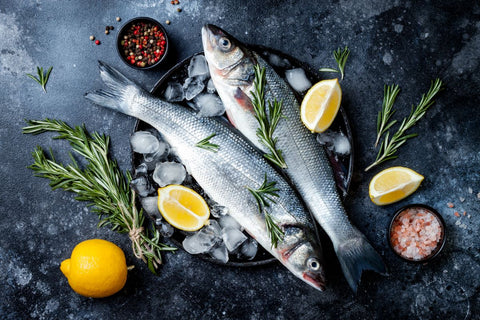We all like to think that we turn into Jamie Oliver when we find ourselves with a perfect piece of fish in the kitchen. How hard can it be? According to Ben Isaacs, the Executive Chef at Collingwood’s Stomping Ground Brewery & Beer Hall, it is pretty simple.
But don’t mistake that for easy.
Stewart Copeland, drummer for The Police, was once asked at a drum clinic to play the hardest thing he could. He thought for a second, before launching into five straight minutes of a standard rock beat. No fills. No trills. No syncopation. Just a simple beat you could set your watch to. The lesson: The most simple things are often incredibly difficult to execute.

Ben Issacs, Executive Chef, Stomping Ground Brewery
Many of us overcomplicate the process and end up butchering a perfectly good piece of fish. In reality, we are less Jamie Oliver and more shaking intern standing over a charcoaled mess.
But it doesn’t have to be this way. Here are a few tips from Ben to help you cook a simply mouthwatering piece of fish:
1. Season the fish with flake salt before you begin cooking. This is better than cracked (or heaven help us) table salt because it dissolves quicker into the flesh of the fish. You aren’t going to keep the fish over heat for too long, so that speed becomes very helpful. It also spreads more evenly because you can pick up the flakes. More fine variants of salt can clump in some sections and miss others altogether. Finally, some types of flake salt are derived from seawater and so there is a natural synergy in the flavours.
2. Get the cooking surface hot and don’t cook for long. Let’s be real: Fish is delicious, and you want to preserve this as best you can. Fish cooks more quickly than chicken or beef because there is less fat and connective tissue, but if you overcook it, you kill those natural flavours and the healthy nutrients and you end up with something dry, rough and a bit gross. By cooking it quickly on high heat, you develop a crust which adds texture to the meal: Crispy on the outside, tender on the inside. Perfect!
3. Drizzle extra virgin olive oil just before serving. Aside from the fact that it looks that little bit fancier, it also enhances the taste. Extra virgin olive oil has a distinctive flavour that complements the natural flavour of fish. It adds a bit of complexity to what otherwise might be a fairly straightforward array of flavours. If you’ve slightly overcooked the fish and dried it out, oil can cover for you a little bit, injecting a little bit of lubricant and moisture. Lastly, it is actually a healthy choice. It has antioxidants and anti-inflammatory properties. These will help you avoid a whole carousel of various diseases and cancers. The more you know…

So what kinds of fish work well for this minimalist approach? Ben has a few suggestions, and some of them are a little bit less common than your usual picks.
- Australian salmon: “This is a great fish,” he says. “People get put off by the blood line but you can remove it. Because of its slightly oily flesh, it tends to smoke really well.”
- Gurnard: “This is an amazing looking fish, especially just out of the water,” says Ben. “It’s great for eating. It’s fairly similar to flathead.”
- Leatherjacket: “This is another cool looking fish,” he says. “If you leave it skinned and cooked on bone it is delicious!”
- Trumpeter: “This has cool looking stripes. But more importantly, it provides good sized fillets that grill up a treat”
These are the simple secrets to cooking the perfect piece of fish. It’s just a hop, skip and a jump to being a master seafood chef from here.
Keep it secret, keep it safe!

